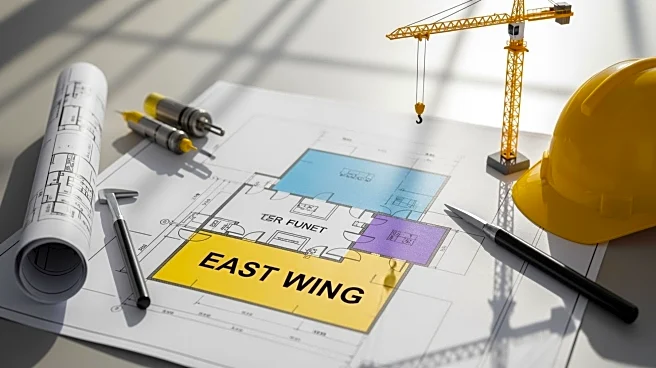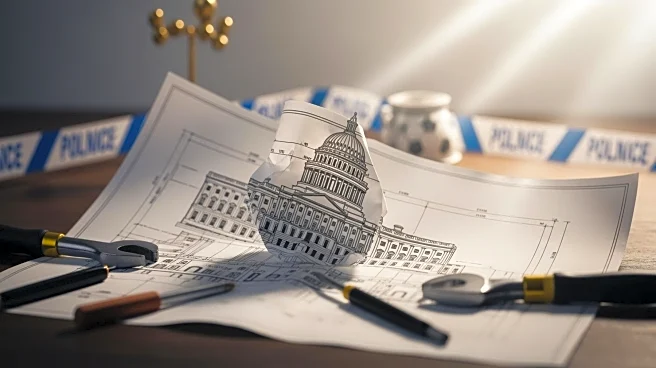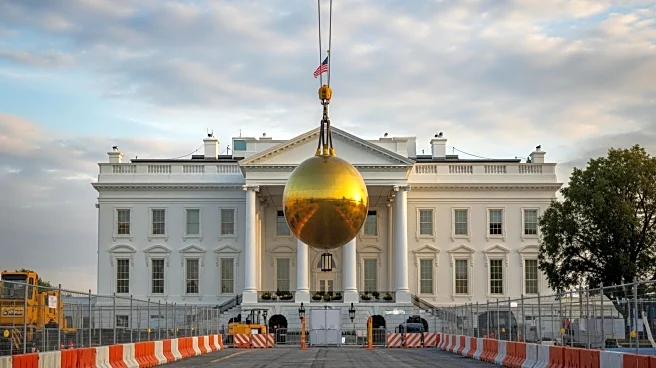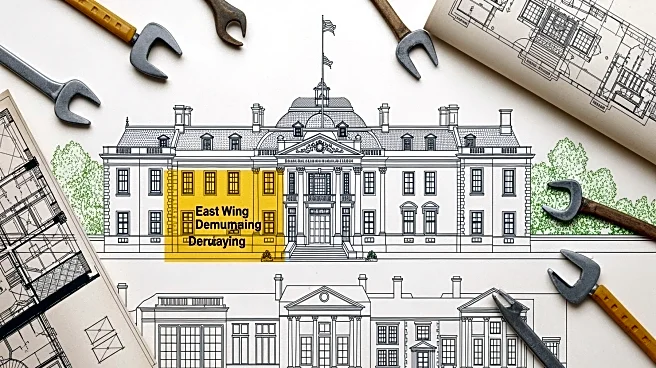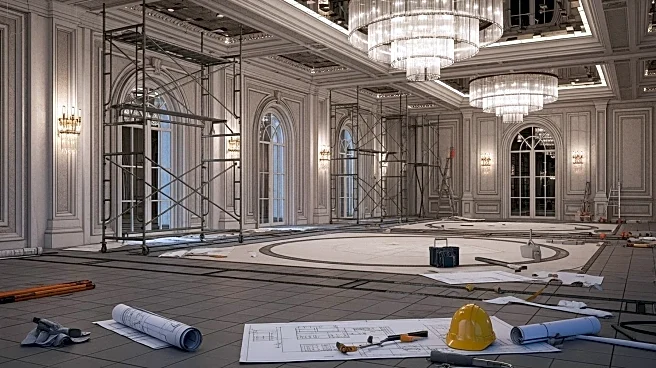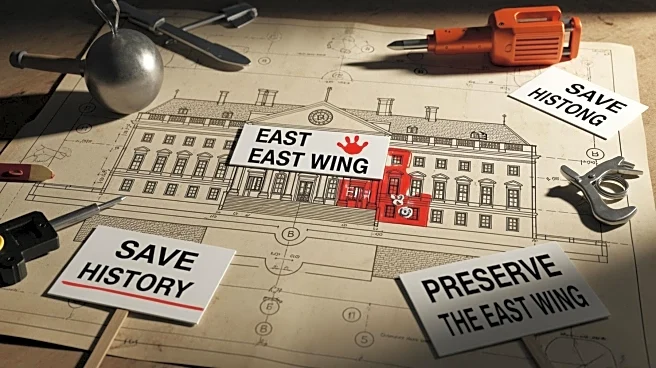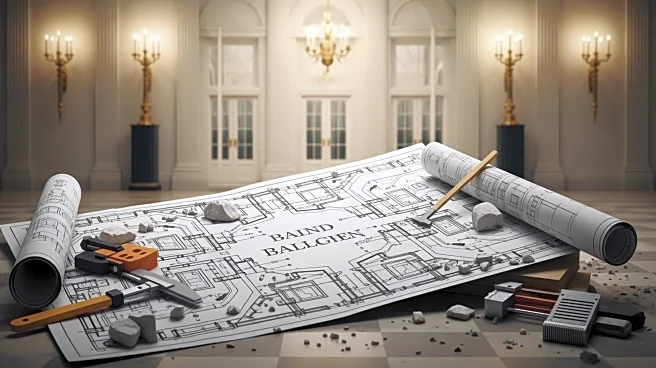What's Happening?
The White House East Wing has been demolished to facilitate the construction of a new ballroom, following President Donald Trump's announcement that the new space would not interfere with the existing
structure. According to Trump administration officials, the decision to demolish the entire East Wing was made during the planning process as it was deemed the best option. This development comes months after President Trump initially stated that the new ballroom would not affect the current building. The decision has sparked discussions about the implications of altering a historic part of the White House.
Why It's Important?
The demolition of the East Wing for a new ballroom highlights President Trump's approach to modifying historic government buildings to suit contemporary needs. This move could set a precedent for future administrations regarding the balance between preserving historical architecture and accommodating modern requirements. The decision may also influence public opinion on how government resources are allocated, especially in terms of maintaining national heritage sites. Stakeholders in historical preservation and government infrastructure may have differing views on the necessity and impact of such changes.
What's Next?
The construction of the new ballroom is expected to proceed following the demolition. It remains to be seen how this development will be received by the public and historical preservationists. There may be further discussions or debates in political and public forums regarding the appropriateness of altering the White House structure. Additionally, the project could face scrutiny over its cost, design, and the potential impact on the historical integrity of the White House.
Beyond the Headlines
The decision to demolish the East Wing for a ballroom raises questions about the ethical considerations of altering historic government buildings. It also reflects broader cultural shifts in how historical sites are valued and preserved in the face of modernization. This development could influence future policies on the preservation of national landmarks and the criteria used to justify structural changes.
